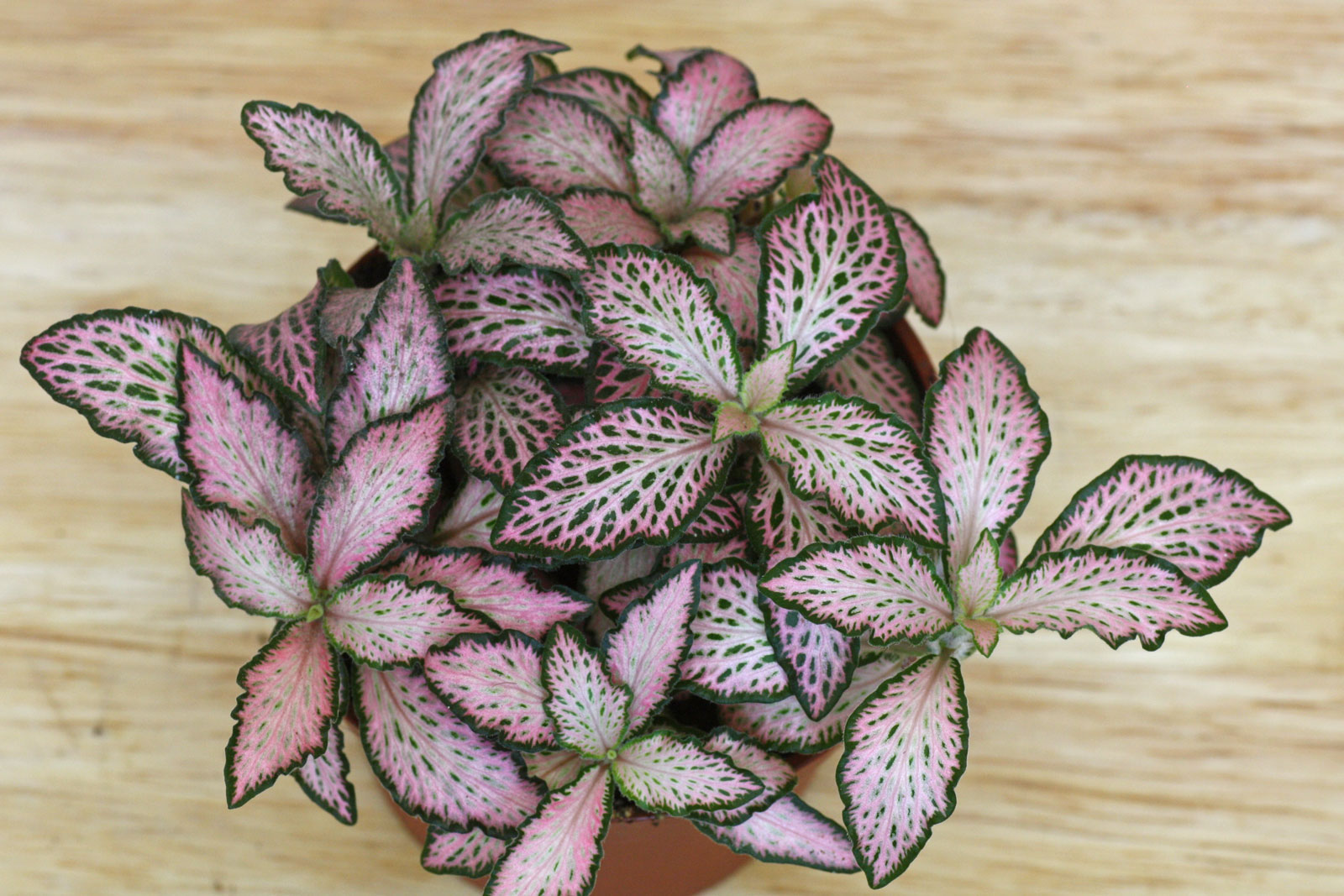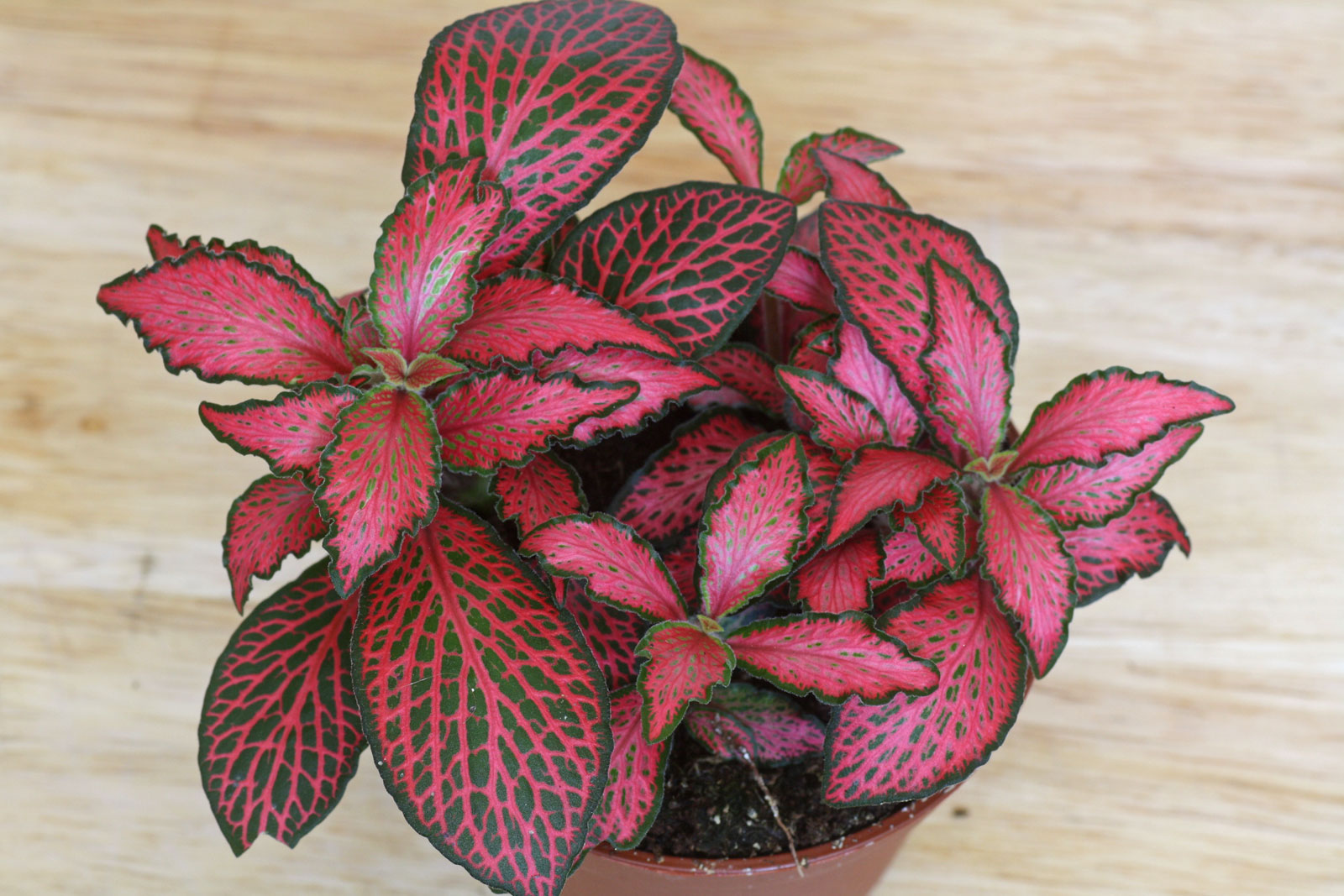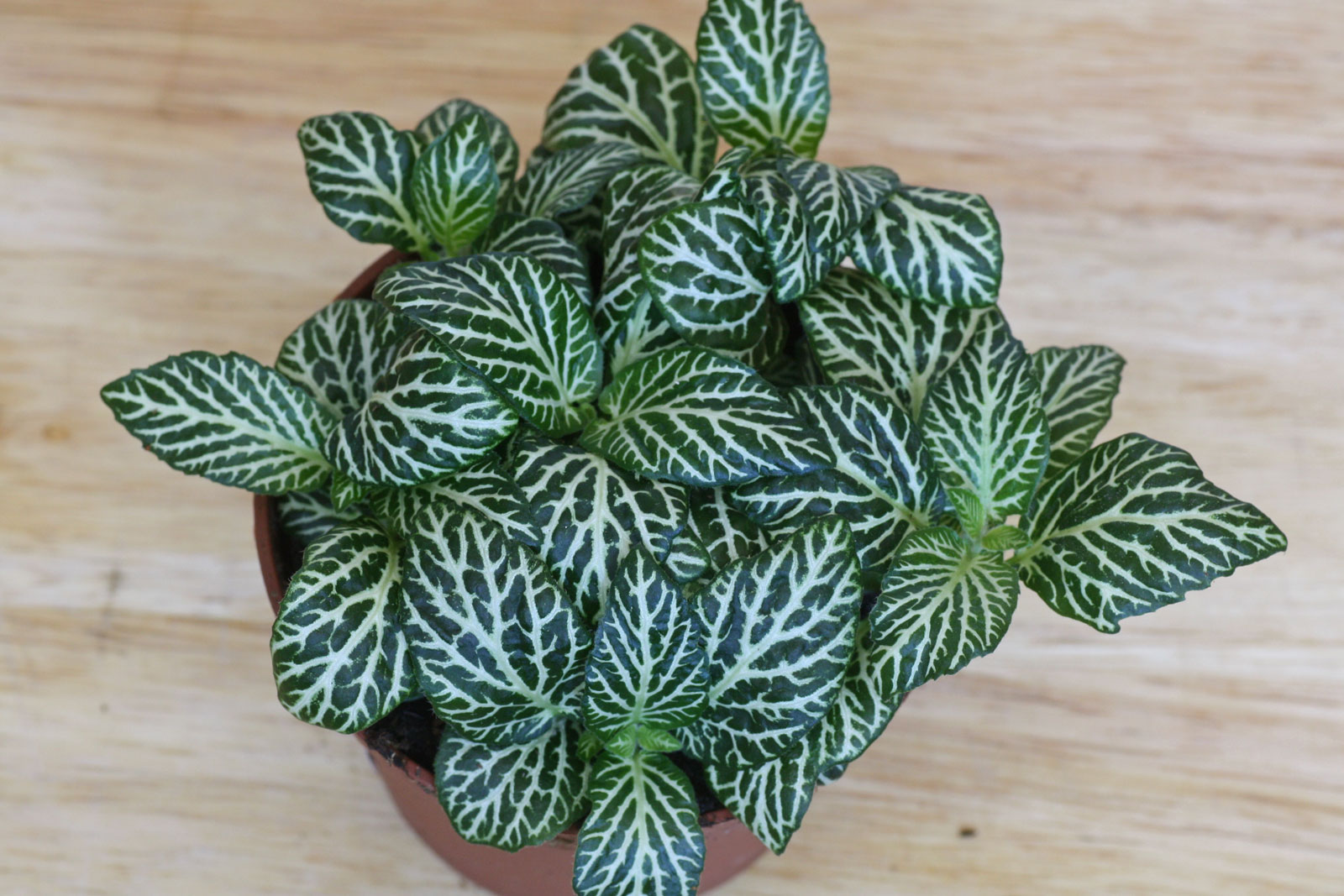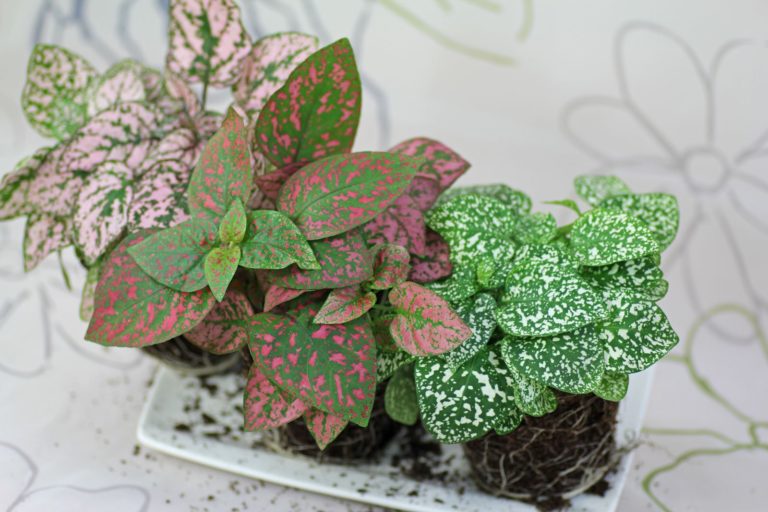Mosaic Plant, Nerve Plant

Please note
Fittonia albivenis can’t be grown submersed and is not a real aquarium plant. After a few weeks the leaves rot and and pollute the water.

Care
Lighting
The red, yellow and white cultivars need bright light for intensive leaf coloring. With some morning or evening sun. The green forms do also good if placed light shaded. Hot summer afternoon sun can cause leaf burn.
Soil
Standard compost for container plants, vegetables or herbs can be used.

Watering
Let the soil moderately dry between the waterings to max. 2/3 of the pots height.
Feeding
When in active growth with standard liquid fertilizer (monthly), spikes or granules (2 to 3 monthly). New bought or recently repotted plants don’t need to be fed for the first year.
Temperature
The Mosaic Plant likes it warm the year round and needs a minimum temperature of 15 °C (59 °F).

Propagation
At 22 to 30 °C (72 to 86 °F) cuttings need 2 to 3 weeks to root.




Profile
Scientific name
Fittonia albivenis (syn. Fittonia verschaffeltii)
Common name(s)
Mosaic Plant, Nerve Plant, Silver Netplant and others
Family
Acanthaceae
Origin
Tropical South America
Height
5 to 10 cm, grows creeping
Toxic
No but not edible


